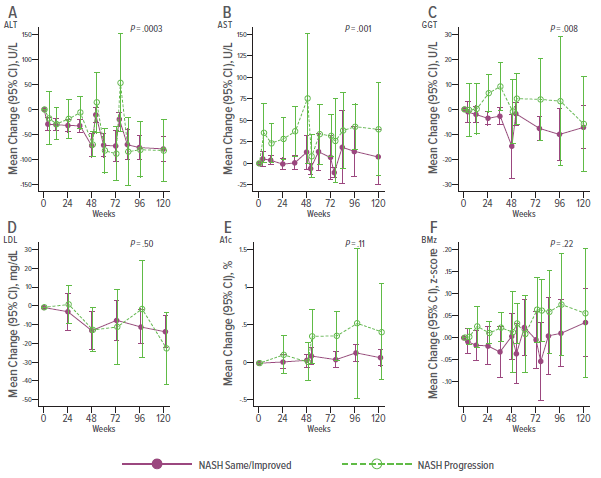Standard of Care Lifestyle Advice Is Not Enough to Treat Fatty Liver Disease
Published July 2020 | Gastroenterology
One in 10 children experience nonalcoholic fatty liver disease (NAFLD). Among young adults with NAFLD, fatty liver during childhood is now the leading predictor of future liver transplant. Adults with NAFLD can experience cirrhosis, end-stage liver disease, and increased cardiovascular morbidity and mortality. Despite NAFLD’s commonality, little is understood about outcomes for youth.
In the largest study of its kind, members of the NASH Clinical Research Network compared outcomes of children treated with placebo and standard of care lifestyle advice in two double-blind, randomized clinical trials spanning 10 years. Stavra Xanthakos, MD, director of the Steatohepatitis Center at Cincinnati Children’s served as lead author.
The team reported that lifestyle counseling focusing on helping children reach a healthy weight “can reduce severity of NAFLD in some children, but only rarely leads to complete resolution of disease.”
The study examined biopsies from 122 children with NAFLD, finding that half showed improvement of some histological features. However, only three (2.4%) of the children completely resolved their fatty liver disease. About a third of participants experienced worsening disease severity despite counseling—including a high incidence of type-2 diabetes. Many experienced weight gain.
“This highlights the need to develop effective pharmacological therapies for NAFLD in children,” notes Xanthakos.
Nonalcoholic steatohepatitis (NASH) is a form of NAFLD that involves liver inflammation and damage in addition to excess liver fat. Although NASH progression is usually asymptomatic, this study details clinical NAFLD factors that also can increase risk of NASH progression, including worsening obesity, glycemic status, and rising levels of alanine aminotransferase and gammaglutamyl transferase.
Looking ahead, the NASH Clinical Research Network plans to continue tracking children with NAFLD into their late teens and twenties.
How Lifestyle Advice Affected Risk Factors for NASH
Panels show how various risk factor measures changed over time following standard of care lifestyle advice. The factors measured were: (A) alanine transaminase (ALT), (B) aspartate aminotransferase (AST), (C) gamma-glutamyl transferase (GGT), (D) LDL cholesterol (E) hemoglobin A1C and (F) BMI z-score. Averaged scores among those with same/improved NASH progression are denoted by black solid lines. Scores for those with NASH progression appear as dashed lines.





